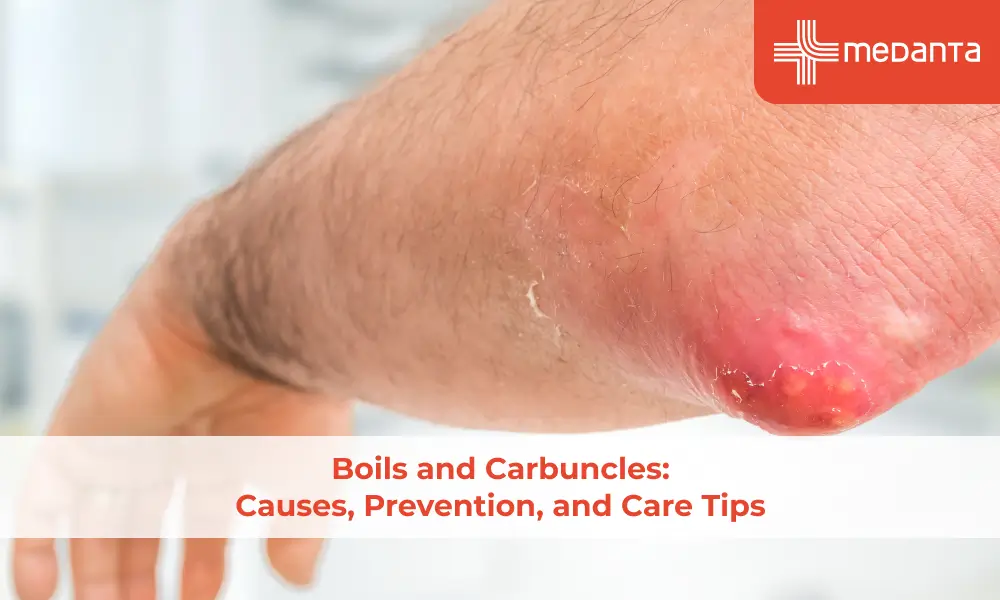Heat Stroke: Symptoms, Treatment, and Prevention Tips for Staying Safe in Hot Weather
Heat stroke occurs when your body overheats due to overexertion in high temperatures. This condition requires emergency treatment; else, it can be life-threatening. Heatstroke occurs when the temperature of your body rises above 40°C from 37°C. Dehydration can also contribute to heat stroke. It is sometimes also called hyperthermia. Untreated heatstroke can damage your muscles, kidneys, heart, and brain. It can even lead to death in extreme cases. You can also get heatstroke if you exercise or work in hot conditions and don’t drink enough water.
If someone has sunstroke, you should try to cool them down while waiting for medical assistance. Move them into a cool place, remove excess clothing, and offer sips of a cool drink or water to help their body get back to normal temperature.
Types of Heat Strokes
Heat strokes are of two types non-exertional and exertional. Non-exertional heatstroke affects people with chronic health conditions like diabetes and older adults. This type of heatstroke may come on gradually for several hours or days. Its effect can increase due to dehydration. Exertional heatstroke is caused by intense physical exertion outdoors during hot and humid weather and dehydration. Heat exhaustion can become a medical emergency in small babies as they cannot regulate their body temperature effectively.
How to Prevent Heat Stroke?
There are various steps you can take to avoid heat stroke.
- Stay hydrated and avoid sugary and hot drinks to replenish fluids lost from your body through sweating and avoid heat-related illness. You should also avoid alcohol as it affects the ability of your body to regulate temperature. Watch out for signs and symptoms of dehydration to prevent heat stroke.
- Wear loose cotton clothing and a hat to protect yourself from the sun. If you go out, try to go after 5 pm or before 11 am. If you have to go outside during the hottest part of the day, take frequent breaks in shaded areas.
- Close curtains and windows during the day and use air conditioning and fans to keep your house cool.
- Taking a bath or cool shower or moving to an air-conditioned place can help you cool off. Use your oven and stove less to maintain a cooler temperature in your home.
- For young children and infants, solutions like Pedialyte can help maintain electrolyte balance and avoid dehydration during heat exposure or illness.
- Never leave pets, infants or children in a parked car, as it can heat up quickly in high temperatures and lead to dangerous circumstances. When leaving your car, ensure everyone is out of the car. Don’t forget to look out for kids who have fallen asleep in the car.
- Use a high-SPF sunscreen before going out. Look for sunscreens that are labelled “UVA/UVB protection” or “broad spectrum”, as these products work best.
- Avoid exercising and other extreme or strenuous physical activity outdoors when it’s humid and hot to prevent heat exhaustion. If your heart pound and you start gasping for breath due to exertion in the heat, stop all activity. Get into the shade or a cool area, especially if you become weak, lightheaded, confused or faint.
Signs and Symptoms of Heat Stroke
Let’s take a look at the common signs and symptoms of heat stroke:
- High or low blood pressure
- Vomiting and nausea
- Seizures
- Tachycardia or rapid breathing
- Dizziness
- Problems with coordination and movement
- Disorientation or confusion
- Excessive sweating and breath loss after you have stopped exercisin
- Balance problem
- Dry skin without sweating, which is quite common in non-exertional heat stroke
- Very pale or flushed skin
- Low urine output
- Loss of consciousness
- Gurgling or bubbling sound in the lungs
- Rapid breathing
If you or your friend or relative exhibits such signs and symptoms, ask them to drink water, move them to a cool shaded area and seek medical attention immediately.
Treatment for Heat Stroke
Sunstroke is a severe medical condition that requires immediate medical treatment. To avoid heat stroke, you should know what is the normal body temperature range and what to do if the temperature rises. Dehydration can also contribute to heat stroke, so stay hydrated throughout the day. While waiting for an ambulance to arrive, you can do the following things:
- Immerse in cool water
- Drink slightly slated fluids like salted water or sports drink
- Lay down in a shady, well-ventilated environment
- Remove heavy or tight clothing
- Apply an ice pack to the armpits, groin and neck
- Blow air across your body
- Monitor your breathing carefully
- Oral rehydration solution can be a lifesaving formula for anyone affected by heat stroke.
Wrapping Up
At the hospital or clinic, the person with sunstroke may be given supplemental oxygen, an ice bath, a cooling blanket, cooled intravenous fluids or medications to prevent seizures. The treatment will depend upon the severity of the situation.
Sometimes cold-water lavage is given to patients wherein catheters are used to fill the cavities of the body with cold water. This instantly lowers the body temperature. Once the body reaches 38.9 degrees Celsius, doctors will stop cooling treatments for sunstroke.






